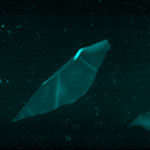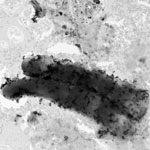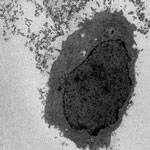Showing Spotlights 129 - 136 of 217 in category All (newest first):
 Nanoscience and nanotechnology have emerged as important priorities not only for science but also for economic development. In this article, the authors propose an analytical framework that considers the socioeconomic effects of nanotechnology in six key areas: institutional development, knowledge flows, and network efficiency; research and education capabilities; industrial and enterprise development; regional spread; cluster and network development; and product innovation. This framework is applied to assess the early impacts of the evolving domain of nanotechnology for development, with a focus on China and its transitioning economy.
Nanoscience and nanotechnology have emerged as important priorities not only for science but also for economic development. In this article, the authors propose an analytical framework that considers the socioeconomic effects of nanotechnology in six key areas: institutional development, knowledge flows, and network efficiency; research and education capabilities; industrial and enterprise development; regional spread; cluster and network development; and product innovation. This framework is applied to assess the early impacts of the evolving domain of nanotechnology for development, with a focus on China and its transitioning economy.
Dec 5th, 2012
 Power dissipation is the limiting factor to the continued scaling of size and speed of conventional silicon technology used for fabrication of integrated circuits and computer chips. For each switch of a transistor, an amount of energy needs to be dissipated that is proportional to the number of electrons and temperature. This condition is of a fundamental nature, resulting from the laws of thermodynamics.However, the assumption underlying this fundamental limit is that the electrons or spins act as an ensemble of independent particles. If instead, the electrons are in a collective state, then the minimum dissipation limit for one switching cycle can be greatly reduced. This fact provides a strong motivation to exploit collective states as alternative variables for information processing.
Power dissipation is the limiting factor to the continued scaling of size and speed of conventional silicon technology used for fabrication of integrated circuits and computer chips. For each switch of a transistor, an amount of energy needs to be dissipated that is proportional to the number of electrons and temperature. This condition is of a fundamental nature, resulting from the laws of thermodynamics.However, the assumption underlying this fundamental limit is that the electrons or spins act as an ensemble of independent particles. If instead, the electrons are in a collective state, then the minimum dissipation limit for one switching cycle can be greatly reduced. This fact provides a strong motivation to exploit collective states as alternative variables for information processing.
Nov 8th, 2012
 Protection against nerve agents - such as tabun, sarin, soman, VX, and others - is a major terrorism concern of security experts. Current methods to detect nerve agents include surface acoustic wave sensors; conducting polymer arrays; vector machines; and the most simple: color change paper sensors. Most of these systems have have certain limitations including low sensitivity and slow response times. Nanoporous material can remove highly toxic nerve agent vapors by physical adsorption. Unfortunately, the broad range of toxic agents, environmental conditions and types of carbonaceous material simply does not allow laboratory testing of every possible combination. New research is now shedding new light on the selection of an optimal nanomaterial for capturing highly volatile nerve agents.
Protection against nerve agents - such as tabun, sarin, soman, VX, and others - is a major terrorism concern of security experts. Current methods to detect nerve agents include surface acoustic wave sensors; conducting polymer arrays; vector machines; and the most simple: color change paper sensors. Most of these systems have have certain limitations including low sensitivity and slow response times. Nanoporous material can remove highly toxic nerve agent vapors by physical adsorption. Unfortunately, the broad range of toxic agents, environmental conditions and types of carbonaceous material simply does not allow laboratory testing of every possible combination. New research is now shedding new light on the selection of an optimal nanomaterial for capturing highly volatile nerve agents.
Nov 7th, 2012
 A new report, which reviews the history of nanotechnology research and development at NASA over the past 15 years, shows that NASA is the only U.S. federal agency to scale back investment in this area. The study argues that nanotechnology has the proven capability of revolutionizing most areas of technology that will be critical to NASA's future missions: The agency needs a bolder plan for R+D to match the requirements of those missions and to recapture its place at the forefront of nanotechnology. But it's not as if NASA doesn't have any ideas as to how nanotechnologies could be used to advance space technologies. In 2010, the agency drafted a 20-year Nanotechnology Roadmap as part of its integrated Space Technology Roadmap. According to this document, nanotechnology can have a broad impact on NASA missions.
A new report, which reviews the history of nanotechnology research and development at NASA over the past 15 years, shows that NASA is the only U.S. federal agency to scale back investment in this area. The study argues that nanotechnology has the proven capability of revolutionizing most areas of technology that will be critical to NASA's future missions: The agency needs a bolder plan for R+D to match the requirements of those missions and to recapture its place at the forefront of nanotechnology. But it's not as if NASA doesn't have any ideas as to how nanotechnologies could be used to advance space technologies. In 2010, the agency drafted a 20-year Nanotechnology Roadmap as part of its integrated Space Technology Roadmap. According to this document, nanotechnology can have a broad impact on NASA missions.
Oct 23rd, 2012
 Quick Response Codes, or QR codes for short, are two-dimensional matrix codes that can hold 100 times more data than a traditional barcode. QR codes have rapidly gained popularity and are now very commonly used in various products, because of fast readability and large storage capacity. Applying the concept of QR codes to security printing applications - think banknotes - researchers have now developed an invisible QR code made from nanoparticles. They applied upconverting inks to print QR codes on paper and transparent tape, using an aerosol jet direct writing machine. They produced QR codes with embedded security characters using blue and green upconverting inks. These codes are invisible to the naked eye but produce single- and multi-color upconversion luminescence images under near-infrared excitation which can be read and decoded with an unmodified smart phone.
Quick Response Codes, or QR codes for short, are two-dimensional matrix codes that can hold 100 times more data than a traditional barcode. QR codes have rapidly gained popularity and are now very commonly used in various products, because of fast readability and large storage capacity. Applying the concept of QR codes to security printing applications - think banknotes - researchers have now developed an invisible QR code made from nanoparticles. They applied upconverting inks to print QR codes on paper and transparent tape, using an aerosol jet direct writing machine. They produced QR codes with embedded security characters using blue and green upconverting inks. These codes are invisible to the naked eye but produce single- and multi-color upconversion luminescence images under near-infrared excitation which can be read and decoded with an unmodified smart phone.
Oct 8th, 2012
 In the construction industry and in architecture, nanotechnology and nanomaterials provide new opportunities. 'Nano-products' for construction purposes are currently found in four main sectors: cement-bound construction materials, noise reduction and thermal insulation or temperature regulation, surface coatings to improve the functionalities of various materials, and fire protection. At the present time, nanomaterials - and therefore 'nano-products' - remain considerably more expensive than conventional alternatives due to the required production technology, and the technical performance of many products remains to be demonstrated. Also, Information on which nanomaterial is found in which form and concentration in a product is often unavailable, particularly to end users.
In the construction industry and in architecture, nanotechnology and nanomaterials provide new opportunities. 'Nano-products' for construction purposes are currently found in four main sectors: cement-bound construction materials, noise reduction and thermal insulation or temperature regulation, surface coatings to improve the functionalities of various materials, and fire protection. At the present time, nanomaterials - and therefore 'nano-products' - remain considerably more expensive than conventional alternatives due to the required production technology, and the technical performance of many products remains to be demonstrated. Also, Information on which nanomaterial is found in which form and concentration in a product is often unavailable, particularly to end users.
Sep 13th, 2012
 Aquatic ecotoxicity test methods, which are routinely applied to testing of nanomaterials, were originally developed for water soluble chemicals. Nanomaterials are fundamentally different from many 'conventional' chemicals as they often have limited or no solubility at all and are potentially released to the environment in a particulate form (e.g. carbon nanotubes). Only limited nano-specific guidance on ecotoxicity testing is currently available, for instance existing OECD ecotoxicity test guidelines to nanomaterials. These guidelines exhibit a number of specific shortcomings mainly related to characterization, exposure preparation, quantification and monitoring concentrations, and dose-metrics. A new paper from scientists in Denmark contributes to the progress in algae testing of nanomaterials. This work also aids in the development of additional guidance as it adds to the understanding of pros and cons of different techniques for biomass quantification.
Aquatic ecotoxicity test methods, which are routinely applied to testing of nanomaterials, were originally developed for water soluble chemicals. Nanomaterials are fundamentally different from many 'conventional' chemicals as they often have limited or no solubility at all and are potentially released to the environment in a particulate form (e.g. carbon nanotubes). Only limited nano-specific guidance on ecotoxicity testing is currently available, for instance existing OECD ecotoxicity test guidelines to nanomaterials. These guidelines exhibit a number of specific shortcomings mainly related to characterization, exposure preparation, quantification and monitoring concentrations, and dose-metrics. A new paper from scientists in Denmark contributes to the progress in algae testing of nanomaterials. This work also aids in the development of additional guidance as it adds to the understanding of pros and cons of different techniques for biomass quantification.
Aug 31st, 2012
 When a nanomaterial enters a physiological environment, it often adsorbs suspended biomolecules including proteins, lipids, small molecules, saccharides, and nucleic acids. These biomolecules define a new interface between the nanomaterial and its surroundings that mediates cellular association and response. In a recent article appearing in ACS Nano, Drs. Anna Salvati, Kenneth Dawson, and their colleagues at the University College in Dublin, Ireland, show that if nanoparticles are exposed directly to cells in the absence of suspended biomolecules, the nanoparticles will extract biomolecules from cells themselves. These findings suggest that in vitro toxicological or cell uptake studies performed in the absence of added serum may not be relevant in vivo.
When a nanomaterial enters a physiological environment, it often adsorbs suspended biomolecules including proteins, lipids, small molecules, saccharides, and nucleic acids. These biomolecules define a new interface between the nanomaterial and its surroundings that mediates cellular association and response. In a recent article appearing in ACS Nano, Drs. Anna Salvati, Kenneth Dawson, and their colleagues at the University College in Dublin, Ireland, show that if nanoparticles are exposed directly to cells in the absence of suspended biomolecules, the nanoparticles will extract biomolecules from cells themselves. These findings suggest that in vitro toxicological or cell uptake studies performed in the absence of added serum may not be relevant in vivo.
Jul 24th, 2012
 Nanoscience and nanotechnology have emerged as important priorities not only for science but also for economic development. In this article, the authors propose an analytical framework that considers the socioeconomic effects of nanotechnology in six key areas: institutional development, knowledge flows, and network efficiency; research and education capabilities; industrial and enterprise development; regional spread; cluster and network development; and product innovation. This framework is applied to assess the early impacts of the evolving domain of nanotechnology for development, with a focus on China and its transitioning economy.
Nanoscience and nanotechnology have emerged as important priorities not only for science but also for economic development. In this article, the authors propose an analytical framework that considers the socioeconomic effects of nanotechnology in six key areas: institutional development, knowledge flows, and network efficiency; research and education capabilities; industrial and enterprise development; regional spread; cluster and network development; and product innovation. This framework is applied to assess the early impacts of the evolving domain of nanotechnology for development, with a focus on China and its transitioning economy.
 Subscribe to our Nanotechnology Spotlight feed
Subscribe to our Nanotechnology Spotlight feed





